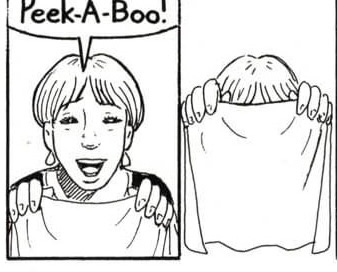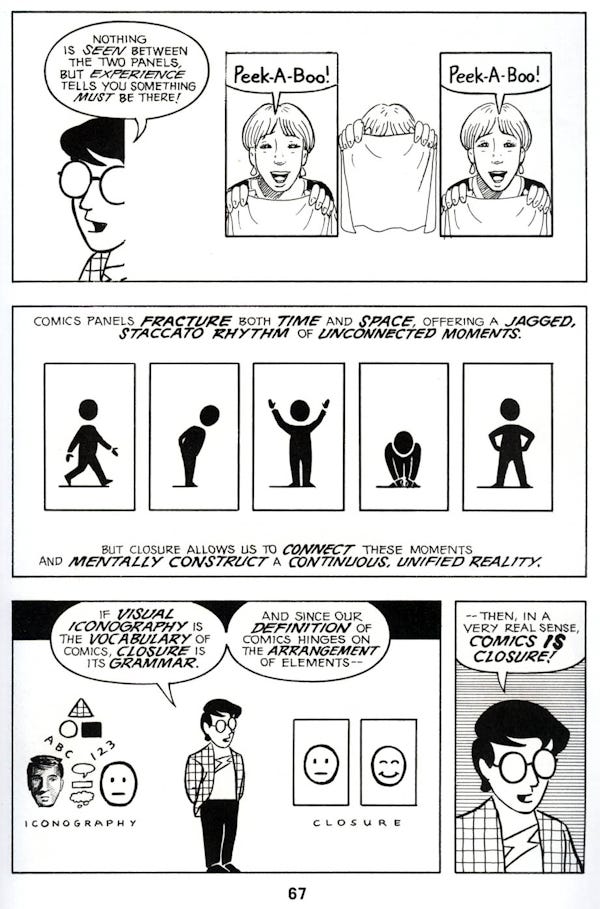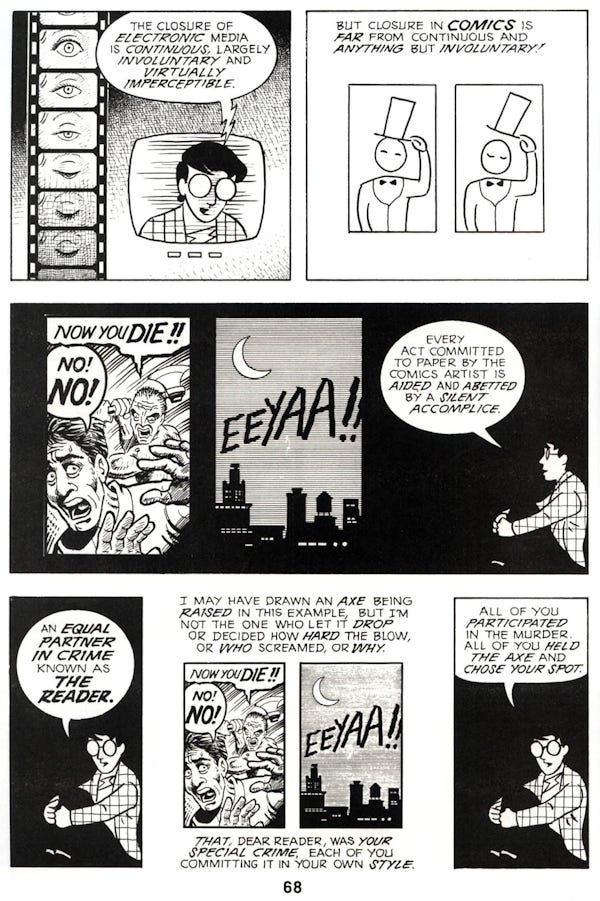Comics and closure
(Adapted from a Facebook post from September, 2020)
For two comics neophytes (that’s me and Sr. Helen) the decision to translate the original text of Dead Man Walking into graphic form required a deep dive into a whole new world. Our chief guide on that journey was Scott McCloud.
McCloud’s Understanding Comics – The Invisible Art is a comic book about comics. More than that, it’s a deconstruction of language, art, and our senses of time and space, all presented in graphically captivating style.
It’s a sneaky book – the illustrations pull you in and, before you know it, you’re delving into philosophical and artistic intricacies, lingering for a long time on a single page, and loving it.
The illustrative form entices you to both read and explore, which is why it is so powerful a medium. For many of us, reading a book like Understanding Comics takes us back to our childhood, when we read Hot Stuff the Little Devil and Asterix the Gaul and Black Panther; there’s an immediate sense of play, of ease, on opening a graphic book, even if the subject matter is deadly serious.
A definition
McCloud defines comics as “juxtaposed pictorial and other images in deliberate sequence, intended to convey information and/or to produce an aesthetic response in the viewer”. That definition comfortably encompasses everything from early storytelling cave art to traditional comic books, to modern graphic novels and graphic non-fiction. His definition places few, if any, limits on the content. Graphic Dead Man Walking slips right into this realm.
Juxtaposed pictorial and other images in deliberate sequence, intended to convey information and/or to produce an aesthetic response in the viewer.
Closure in the gutter
McCloud talks about the concept of ‘closure’, which in comics context means ‘the phenomenon of observing the parts but perceiving the whole’.
A simple example of closure is a drawing in which we see only the top half of a person, but in our minds, we see them as a complete intact torso. Our minds fill in the missing bottom half.
We’re all familiar with panels used in comics to separate each image from the next. The space between any two panels is known as the gutter. You might assume that nothing happens in the gutter but, as McCloud explains, the opposite is true. That’s where closure occurs:
Closure and capital punishment
‘Closure’ is a term also used in conjunction with the death penalty, but with the more customary meaning of healing and completion.
Prosecutors often promise that an execution will give the victim’s family ‘closure’, an end to their pain, a surcease.
The execution rarely, if ever, delivers on that promise. After all, it cannot return the missing child or partner to their place at the dinner table. Unlike closure in comics, that empty space remains empty.
Thoughts?





